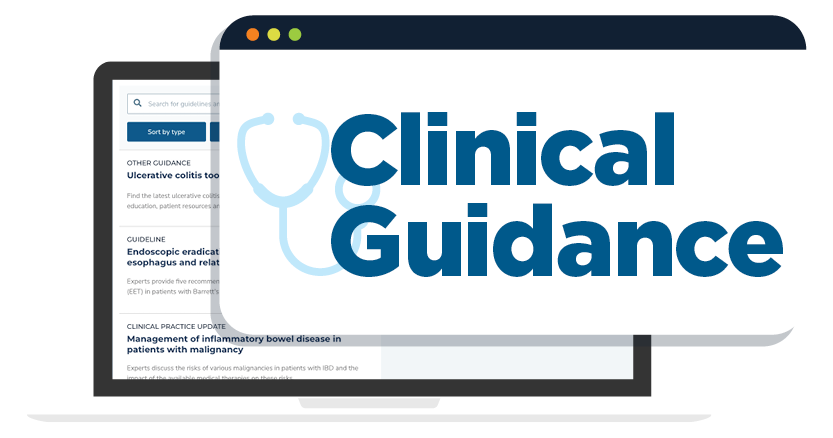1. Screening with standard upper endoscopy may be considered in individuals with at least 3 established risk factors for Barrett’s esophagus (BE) and esophageal adenocarcinoma, including individuals who are male, non-Hispanic white, age >50 years, have a history of smoking, chronic gastroesophageal reflux disease, obesity, or a family history of BE or esophageal adenocarcinoma.
2. Nonendoscopic cell-collection devices may be considered as an option to screen for BE.
3. Screening and surveillance endoscopic examination should be performed using high-definition white light endoscopy and virtual chromoendoscopy, with endoscopists spending adequate time inspecting the Barrett’s segment.
4. Screening and surveillance exams should define the extent of BE using a standardized grading system documenting the circumferential and maximal extent of the columnar lined esophagus (Prague classification) with a clear description of landmarks and the location and characteristics of visible lesions (nodularity, ulceration), when present.
5. Advanced imaging technologies such as endomicroscopy may be used as adjunctive techniques to identify dysplasia.
6. Sampling during screening and surveillance exams should be performed using the Seattle biopsy protocol (4-quadrant biopsies every 1-2 cm and target biopsies from any visible lesion).
7. Wide-area transepithelial sampling may be used as an adjunctive technique to sample the suspected or established Barrett’s segment (in addition to the Seattle biopsy protocol).
8. Patients with erosive esophagitis should be biopsied when concern of dysplasia or malignancy exists. A repeat endoscopy should be performed after 8 weeks of twice a day proton pump inhibitor therapy.
9. Tissue systems pathology-based prediction assay may be utilized for risk stratification of patients with nondysplastic BE.
10. Risk stratification models may be utilized to selectively identify individuals at risk for Barrett’s associated neoplasia.
11. Given the significant interobserver variability among pathologists, the diagnosis of BE-related neoplasia should be confirmed by an expert pathology review.
12. Patients with BE-related neoplasia should be referred to endoscopists with expertise in advanced imaging, resection and ablation.
13. All patients with BE should be placed on at least daily proton pump inhibitor therapy.
14. Patients with nondysplastic BE should undergo surveillance endoscopy in 3 to 5 years.
15. In patients undergoing surveillance after endoscopic eradication therapy, random biopsies should be taken of the esophagogastric junction, gastric cardia, and the distal 2 cm of the neosquamous epithelium as well as from all visible lesions, independent of the length of the original BE segment.












